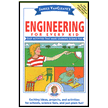Petroleum Means Rock Oil or Oil From the Ground
Petroleum is a Nonrenewable Energy Source
Petroleum engineers, as their title implies, are concerned with petroleum, such as:
How to Find Underground Sources of Petroleum
How to Remove Petroleum
How to Transport Petroleum
One method of removing oil is to force water down a pipe where a pool of oil beneath the ground is located. The water causes the oil to float to the surface. This recovery method depends on two physical properties that the engineer must understand: miscibility and density.
Miscibility describes a substance’s ability to mix and thoroughly blend with another substance.
Immiscible Substances are not able to mix and blend together.
Density describes the mass of a certain volume of a substance. Density is used to determine the buoyancy (ability to float) of materials.
In the diagram, there are three layers of colored liquids.
Layer 1: This blue layer floats on top because it is less dense than the liquid layers below it.
Layer 2: This yellow layer is less dense than the black layer beneath it, but more dense than the blue layer above it.
Layer 3: This black layer is more dense than the liquid layers floating above it.
 Oil and water do not mix, thus they are immiscible.
Oil and water do not mix, thus they are immiscible.
When oil and water are mixed, they separate and form layers.
Top Layer: The least dense liquid (oil).
Bottom Layer: The most dense liquid (water).
When an oil and water mixture is shaken, bubbles of oil and bubbles of water form. When the agitation stops, the two immiscible liquids do not immediately separate. Instead, the separation process involves several visible steps:
Step 1: At first there are no specific layers. Instead, it appears to be a liquid with water bubbles and oil bubbles dispersed throughout.
Step 2: In a short time, three layers of liquid form. The top layer is oil, middle layer is the bubble mixture, and the bottom layer is water.
FYI- How the three layers form: The oil bubbles aggregate (combine) forming larger bubbles that float to the surface where the bubble pops and the oil spreads out and floats on top of the bubble mixture.The water bubbles also aggregate and the larger bubbles of water are less dense than is the bubble mixture, so the bubbles sink, break and form a layer of water beneath the bubble mixture.
Step 3: The middle layer disappears and there are only two layers of liquid- top layer is oil and bottom layer is water.
DISCOVER FOR YOURSELF
1. Pouring 1/2 cup (125ml) cooking oil into an empty 20-ounce (600-ml) plastic water bottle with cap.
2. Add enough tap water to fill the bottle so that it is half-full.
3. Add 5 to 6 drops of blue food coloring to the bottle.
4. Secure the cap on the bottle, then vigorously shake the bottle.
5. Stand the bottle upright, and observe the contents of the bottle.
6. Continue to observe the contents of the bottle periodically until the oil and water separate.
? How long did it take for the two immiscible liquids to separate?
Challenge: What affect does the amount of agitation of the mixture have on the separation time of the two immiscible liquids?
You can find out more about the different kinds of engineering and the science they use in Janice VanCleave’s Engineering for Every Kid (Wiley/Jossey-Bass)
 |
Janice VanCleave’s Engineering for Every Kid: Easy Activities That Make Learning Science Fun |